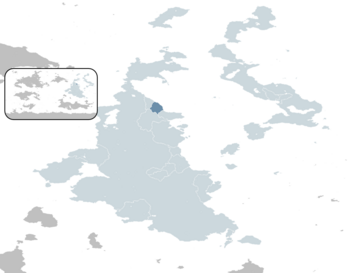East Toriany
Jump to navigation
Jump to search
This article is incomplete because it is pending further input from participants, or it is a work-in-progress by one author. Please comment on this article's talk page to share your input, comments and questions. Note: To contribute to this article, you may need to seek help from the author(s) of this page. |
Republic of Toriany Kelet-Tarján Köztársaság (Torianian) | |
|---|---|
|
Flag | |
Motto: Egyesült a demokráciánk alatt United under our democracy | |
 Republic of Toriany Atusia | |
| Capital and largest city | Atouyvaros |
| Official languages | Torianian |
| Ethnic groups (2021) | Torianian 95.1% 4.9% other nationalities |
| Demonym(s) | East Torianian • Torianian |
| Government | Unitary presidential constitutional republic |
• President | Miksa Árpád |
• Prime-Minister | Dominik Nagy |
• Speaker of the National Assembly | Kevin Varga |
| Legislature | National Assembly |
| Foundation | |
| >110s AD | |
| 355 | |
| 988 | |
| 1442 | |
| 1877 | |
• Independence from Kasai declared | 22 December 1900 |
• UF Administration of Toriany | 1 April 1953 |
• Current Constitution | 15 August 1981 |
| Population | |
• 2023 estimate | 24,586,290 |
| GDP (PPP) | 2016 estimate |
• Total | $766 billion |
• Per capita | $42,329 |
| HDI (2023) | 0.899 very high |
| Currency | Torianian Szűts |
| Time zone | UTC +7 |
| Driving side | left |
| Internet TLD | .by |
East Toriany (/iːst ˈtɔːɹi.ən.i/; listen, Torianian: Kelet-Tarjánország, /ˈke.let ˈtɒr.jaː.nor.saːɡ/) officially the Republic of Toriany (Torianian: Tarjánország Köztársaság) is a country in Atusia located along the Gulf of Toriany and makes up a land area of Xkm2 (X sq mi). It shares land borders with X to the west, West Toriany to the north, X to the east and Shorguria to the south. East Toriany has a population of around 24.5 million. The capital city is Delotthona with other major metripolitan areas including Devecsar, Emberek, Nagymizdó and Eger.
Etymology
History
Prehistory
Geography
Biodiversity
Climate
Politics and Government
President Miksa Árpád
Prime-Minister Dominik Nagy
Foreign Relations
Military
Administrative Divisions
Law
Law Enforcement
Economy
Primary sector
Secondary sector
Tertiary sector
Quarternary sector
Energy
Natural resources
Demographics
Urbanization
Immigration
Religion
Languages
Education
Healthcare
Culture
See Also
References


